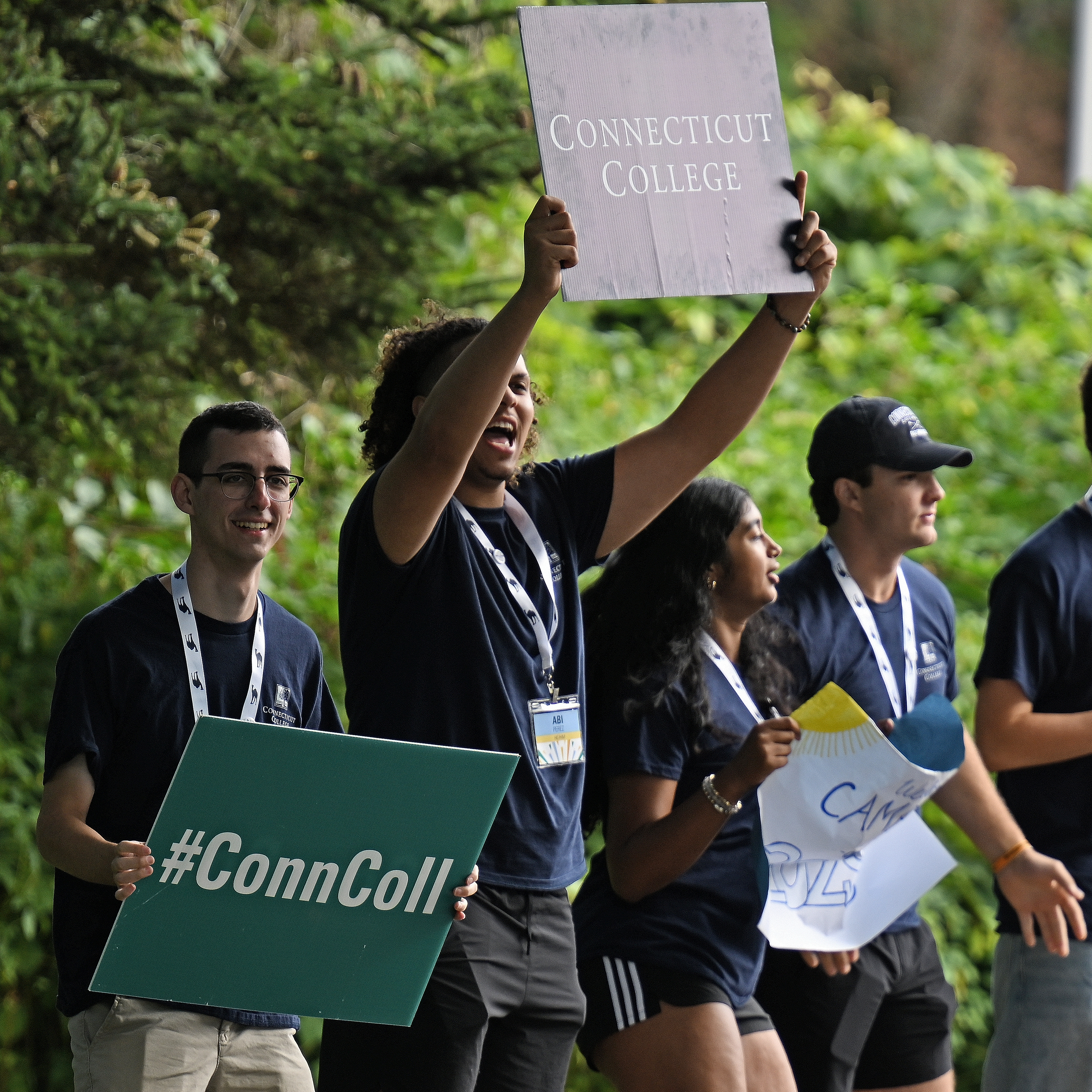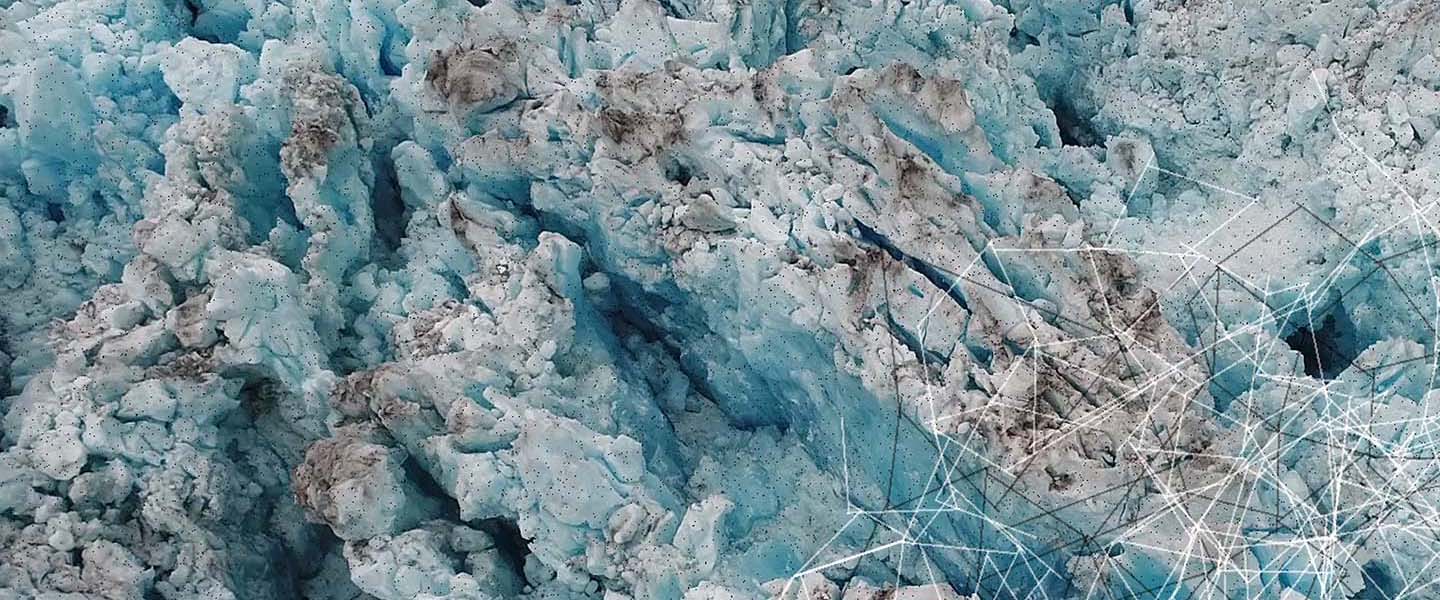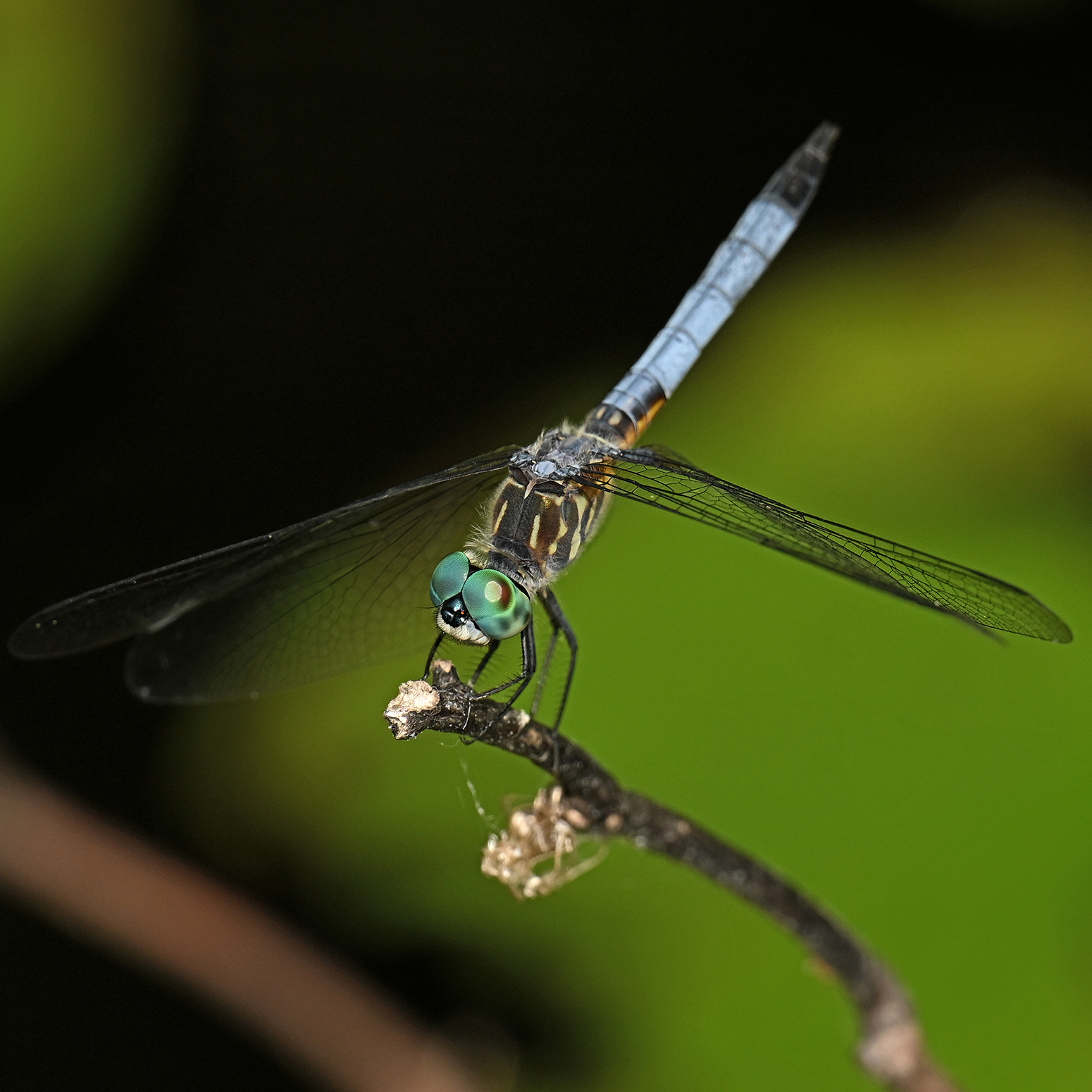
Polar Art
"Open Waters" is a multimedia, interactive art installation on display at SUNY Buffalo State College.
For hundreds of years, explorers searched in vain for a navigable passage through the frozen Arctic. Now, the great myth of a sailable Arctic is becoming a reality.
Visual artist Andrea Wollensak, professor of art and director of Conn’s Ammerman Center for Arts and Technology, and computer scientist Bridget Baird, professor emerita in computer science and mathematics at Conn, along with poet Judith Goldman and composer/sound artist Brett Terry, examine the melting of the polar ice caps and other troubling effects of environmental and geopolitical change on the world’s oceans and waterways in Open Waters. It is a multimedia, interactive art installation on display at the Burchfield Penney Art Center at SUNY Buffalo State College through March 29.
Several pieces in the exhibit consider the global circulation of microplastics and the extent of plastic pollution in the Arctic and the Great Lakes, including large-format photographs of plastic pollution in New York-area waterways and an animated video projection that incorporates research poetry on plastic pollution in the Great Lakes system and the politics of plastic recycling.
Other major pieces in Open Waters include a hybrid print-digital interactive book of poems based on multidisciplinary archival research on the history of arctic exploration and contemporary Arctic environmental degradation, a floor piece of 17 raised panels of etched glass that depict a historical map of the route from Buffalo to the Northwest Passage, and an interactive wall that combines video and audio works based on ice breaking and shipping in the far North and uses a Kinect motion sensor that responds to viewer activity in real time to evoke the effects of human disruption on the Arctic environment.
“The range of works and media ecology in the exhibition is a metaphor for today’s Arctic environment and gives the viewer a sense of what is happening in the Arctic—melting ice caps, ice and permafrost thaw, growing interest in resources, expansion of international waters—as well as the impact of microplastic pollution in our oceans and waterways,” said Wollensak.
Open Waters is the latest work in a four-year collaboration between Wollensak, Baird, and their co-collaborators Goldman and Terry. The project is funded by a Global Warming Art Project grant administered by the Arts Services Initiative of Western New York.

